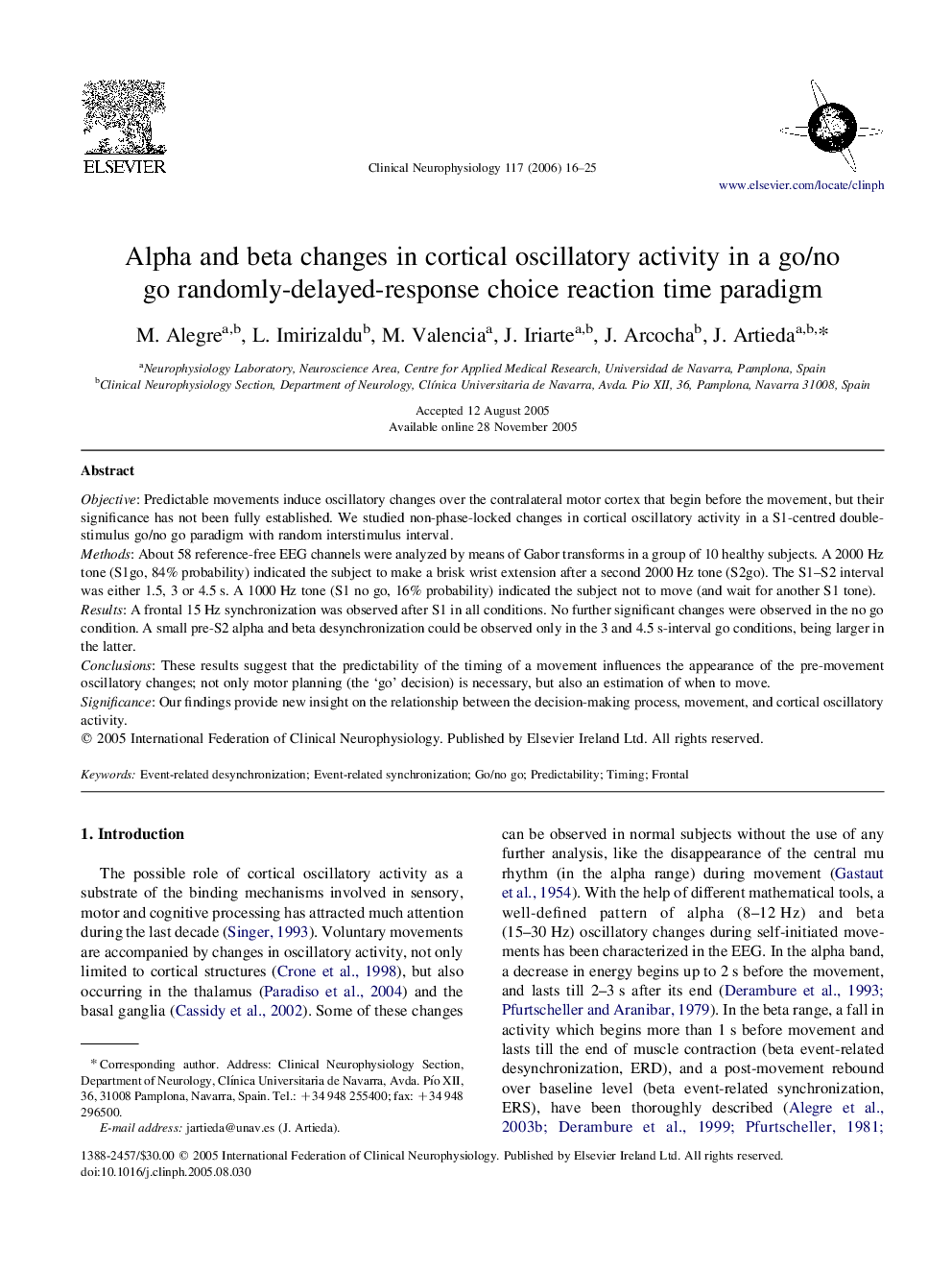| Article ID | Journal | Published Year | Pages | File Type |
|---|---|---|---|---|
| 3048063 | Clinical Neurophysiology | 2006 | 10 Pages |
ObjectivePredictable movements induce oscillatory changes over the contralateral motor cortex that begin before the movement, but their significance has not been fully established. We studied non-phase-locked changes in cortical oscillatory activity in a S1-centred double-stimulus go/no go paradigm with random interstimulus interval.MethodsAbout 58 reference-free EEG channels were analyzed by means of Gabor transforms in a group of 10 healthy subjects. A 2000 Hz tone (S1go, 84% probability) indicated the subject to make a brisk wrist extension after a second 2000 Hz tone (S2go). The S1–S2 interval was either 1.5, 3 or 4.5 s. A 1000 Hz tone (S1 no go, 16% probability) indicated the subject not to move (and wait for another S1 tone).ResultsA frontal 15 Hz synchronization was observed after S1 in all conditions. No further significant changes were observed in the no go condition. A small pre-S2 alpha and beta desynchronization could be observed only in the 3 and 4.5 s-interval go conditions, being larger in the latter.ConclusionsThese results suggest that the predictability of the timing of a movement influences the appearance of the pre-movement oscillatory changes; not only motor planning (the ‘go’ decision) is necessary, but also an estimation of when to move.SignificanceOur findings provide new insight on the relationship between the decision-making process, movement, and cortical oscillatory activity.
